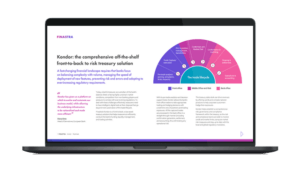Deciphering the Nasdaq Futures Chart: A Guide for Investors
The Nasdaq futures chart is an essential tool for investors aiming to predict stock market trends and make informed decisions. This article explores the significance of the Nasdaq futures chart, how it works, and its impact on investment strategies, providing a comprehensive understanding for those navigating the complexities of the financial markets.

Understanding the Nasdaq Futures Chart
The Nasdaq futures chart represents the expected future value of the Nasdaq stock index, a benchmark for U.S. technology and biotech stocks. By analyzing these charts, investors can gauge market sentiment, predict price movements, and strategize their investments accordingly. Futures contracts, depicted in these charts, are agreements to buy or sell the Nasdaq index at a future date, offering insights into investor expectations and potential market directions.
Key Features of the Nasdaq Futures Chart
Several features make the Nasdaq futures chart a valuable resource for investors:
- Price Movements: The chart shows price trends over time, highlighting patterns that may indicate future market behavior.
- Volume: Trading volume, represented on the chart, provides insights into the level of activity and interest in Nasdaq futures contracts.
- Open Interest: This metric indicates the total number of open contracts, offering clues about market strength and potential price changes.
How Investors Use the Nasdaq Futures Chart
Investors leverage the Nasdaq futures chart for various purposes:
- Market Prediction: By analyzing trends and patterns, investors can forecast market movements and adjust their portfolios accordingly.
- Risk Management: Futures can serve as a hedge against market volatility, allowing investors to manage risk more effectively.
- Investment Opportunities: Spotting divergences between futures prices and actual index values can reveal potential investment opportunities.
The Impact of the Nasdaq Futures Chart on Investment Strategies
The Nasdaq futures chart significantly influences investment strategies, enabling traders to make preemptive moves based on anticipated market shifts. For instance, a rising trend in futures prices might prompt investors to increase their stock holdings in anticipation of market gains. Conversely, declining futures prices could lead to defensive strategies to protect against potential losses.
Challenges and Considerations
While the Nasdaq futures chart is a powerful tool, it comes with challenges. Market volatility, economic indicators, and global events can all impact the accuracy of futures predictions. Investors must also consider the costs associated with trading futures, including commissions and margin requirements.
Conclusion
The Nasdaq futures chart is more than just a graphical representation of market expectations; it’s a critical resource for investors looking to navigate the stock market with insight and strategy. By understanding and effectively utilizing this chart, investors can enhance their market predictions, manage risks, and uncover valuable investment opportunities. However, success requires a balanced approach, incorporating both futures data and broader market analysis to make well-informed decisions in the dynamic world of finance.









